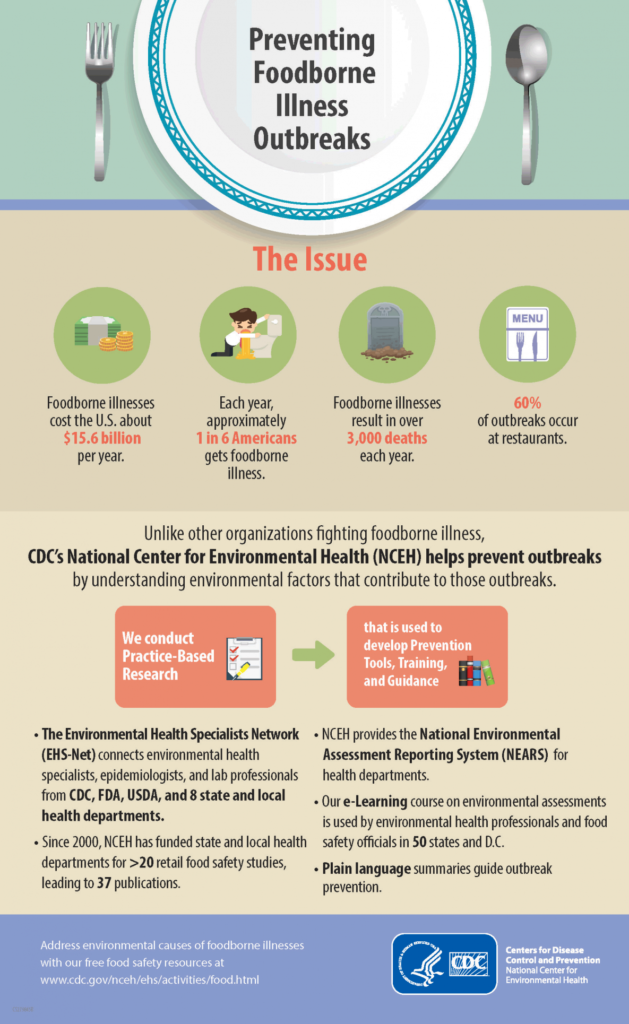Adventures in Food Service – Handwashing, Sanitizing, and Wrongful Death?! Oh My!
 When I started my job as a food service worker, I thought “piece of cake”. Show up and serve food. Collect my check and go home. Well, it’s not quite that simple, at least where I work. I was lucky though. Even pre-COVID19, my first job was with a company that takes both employee and customer safety to an extremely high level. No, I don’t really enjoy the constant cleaning or washing the walls at the end of the night. Really. Who would? But, I get why it’s important.
When I started my job as a food service worker, I thought “piece of cake”. Show up and serve food. Collect my check and go home. Well, it’s not quite that simple, at least where I work. I was lucky though. Even pre-COVID19, my first job was with a company that takes both employee and customer safety to an extremely high level. No, I don’t really enjoy the constant cleaning or washing the walls at the end of the night. Really. Who would? But, I get why it’s important.
Some of the biggest causes:
- Raw or undercooked food
- Improper handwashing
- Poor or neglected sanitizing procedures
As I thought about all the safety procedures and processes that I go through every single day at work, I wondered why. Why all the washing, scrubbing, sanitizing, and why all of the procedures focused on cooking and even veggie prep. Vegetables? Where’s the harm from them?
The Harm of Preventable Foodborne Illness
So, I investigated it, and this is what I found. The harm is in the effect these standards and procedures, more specifically the effect of neglecting them has on people, paying customers. How rude is that? Paying to get sick or die?
The ultimate tragedy is the death of a loved one, parent, child, or friend. But even in cases where the victim lives, the physical, emotional, and financial toll on both the affected person and their family can be devastating. Take the case of Chris Gage, who suffered septic shock and total renal failure from Salmonella poisoning after eating at Old Country Buffet.
Accountability
According to the World Health Organization (WHO), approximately 420,000  deaths worldwide are caused by preventable foodborne illnesses every year. And, when employers fail to follow safety rules and procedures, it can result in injury or death to employees and visitors.
deaths worldwide are caused by preventable foodborne illnesses every year. And, when employers fail to follow safety rules and procedures, it can result in injury or death to employees and visitors.
When these preventable illnesses and deaths occur, do we consider it just a risk of eating out or should someone be held accountable? For me, the answer to this question lies in one word – preventable.
Preventable – with a little hand washing. Sanitizing. An extra minute or two in the oven or on the grill. Even a nightly wall washing, if that’s what it takes, to prevent serious injury; it seems reasonable to me.
Enter the Wrongful Death Attorneys
So, was it an accident, a fluke, or wrongful death? And why does it matter?
We all know accidents happen. It can be tragic, but sometimes, even with the greatest care, they do. And, when it’s not an accident, when a business owner fails to perform and that results in injury or death, the business must be held accountable and take responsibility for their actions…or lack thereof.
Whether it’s a few people, like Chris Cogan and his wife or hundreds as in the case of ConAgra Peanut Butter (750 victims), those who are harmed must be cared for and compensated.
Most of us would probably say that no amount of money can compensate someone for the loss of a person they love. But in our society, it’s the yardstick that we use.
And, it can be a very long yardstick. In the case of Chris Cogan, mentioned earlier, he and his wife received an $11.37 Million judgment against Old Country Buffet for salmonella poisoning.
A Canadian company, Maple Leaf Foods, paid almost $27 million to listeria victims that killed 20 people.
And, a Michigan man who almost died from acute renal failure as a result of E. Coli poisoning received a $650,000 settlement.
The Problems
The human and financial risks of not addressing these preventable problems before they happen are tremendous. So why don’t restaurant owners get ahead of them before they start?
 If you’ve ever watched even one episode of Gordon Ramsay’s 24 Hours To Hell and Back, you know that often owners are oblivious to what is happening in their own kitchens. And, sometimes, they’re just plain lazy or don’t care. Rotting food, unsafe practices, like storing raw and cooked poultry together, freezers that are broken, or disgusting filth throughout the kitchen, refrigeration, and prep areas are not uncommon in the restaurant world. In some cases, night video footage shot when restaurants are closed, even shows rats, mice, and cockroaches running rampant across the floors and counters.
If you’ve ever watched even one episode of Gordon Ramsay’s 24 Hours To Hell and Back, you know that often owners are oblivious to what is happening in their own kitchens. And, sometimes, they’re just plain lazy or don’t care. Rotting food, unsafe practices, like storing raw and cooked poultry together, freezers that are broken, or disgusting filth throughout the kitchen, refrigeration, and prep areas are not uncommon in the restaurant world. In some cases, night video footage shot when restaurants are closed, even shows rats, mice, and cockroaches running rampant across the floors and counters.
With even a modicum of care, every one of these is preventable.
The Solutions
And, we all know it. Most issues are born out of laziness and greed, but with the proper standards – and leaders – these are all issues that can be fixed before tragedy strikes. As I mentioned earlier, I work at a restaurant that I later realized was one in my area that had stricter rules and regulations when it comes to food safety.
Initial and ongoing training is key. While we were all trained about food safety when we were first hired, recently every employee was required to take additional online training about keeping food safe and keeping standards high.
Ongoing training like this is helpful, but what is most important is learning by doing. One necessary part of food safety that I didn’t even realize until I started working was food temperature. Where I work, we are constantly temping our food. Not a single piece of meat is taken off the grill or stove unless it has met the proper temperature. This is an integral part that should be a requirement for every business in the food industry. But this is not the most important part.
When it comes to preventing food poisoning, it is vital to have good leaders. I’ve learned that if the manager or owner of a restaurant is letting standards slip, then it’s certain that employees are too. Where I work, the managers are always reminding us of things we could be doing – organize this, wipe down that, temp this, and more. With the leaders not only enforcing these set rules, but also checking in and making sure we understand what we are doing and how to do it correctly, it has led to a cleaner and safer work environment, which means better and safer food for paying customers.
Employees never outshine their leaders, they will always play at a lower level than their managers and owners: if the manager is at a C level, then the employees will be at a D or F level. When leaders don’t understand or “live” the standards set in place, then they can’t expect their employees to do so.
While employees should know the standards and adhere to them, a fish spoils from its head down.
Prevention is key. It all starts with the managers, and good management leads to a good, safe team, a healthy environment, and delicious and safe food.
* * *
